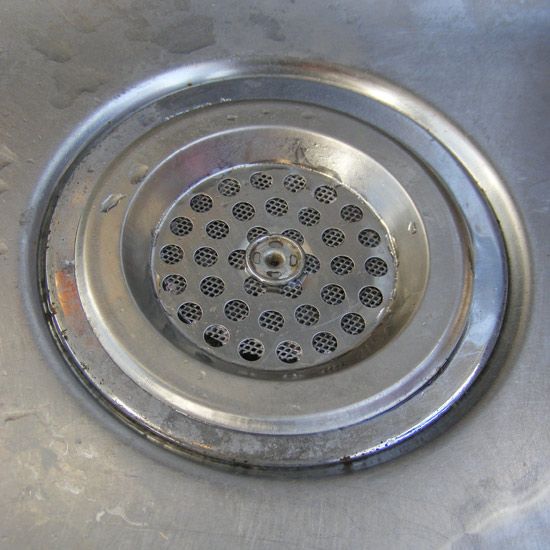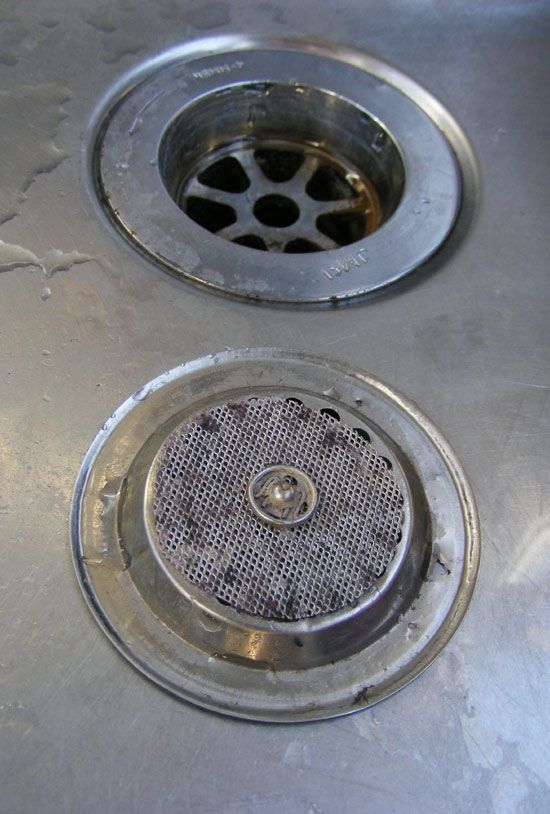Art. Goth. Steampunk. Etiquette. Helpful Tips. Green Hints. Natural History. Recipes. Reviews. Links. Curious & Vintage Clippings. Odd Objects. Macros & Vintage LOLs
Friday, September 30, 2016
Waste Deep
WASTE DEEP from SustainTable on Vimeo.
The title says it all. Made in Melbourne - I'm soproud of my city, we're awesome, we do awesome things!
Friday, September 23, 2016
Everyone is here and ready to roll!
Keeping these hard waste finds together to take to my parents' house for my nieces to play with, was best done like this:
Friday, September 16, 2016
Make a laundry filter for microfibres
After reading about synthetic microfibres becoming marine microplastics I was inspired by Blair Jollimore to improvise a filter I sit in my laundry tub.

Each wash catches about a pea sized amount - when compressed into a ball between my fingers - of wet fibres. We are running a front loading washing machine with the hose running into the laundry tub rather than straight down into a pipe. If you are doing the same then this set up should work for you.
I recommend checking occasionally to see how the water is draining throughout the first wash to ensure there is no risk of overflow. It is possible to collect the fibres as they clump while there is water in the tub. Scrape your fingernails across the strainer then pinch and you should be able to clear it enough to improve the drainage. Top loader users should exercise greater caution as they do use more water, and this system will slow down the draining of water from the laundry tub.
To make this simple, microfibre laundry filter I used an off the shelf sink strainer, an oversized press button and a cut up fry splatter guard* to make a rigid filter.

The press button allows me to detach the filter to clean it out between washes. You can find oversized press buttons at a haberdashery store. A regular sized press button may still work depending on the strainer's holes, but could be fiddly to use.
I got the stainless steel sink strainer and splatter guard from an independent kitchenware store. The fine aluminium mesh of the splatter guard is easily cut with a box cutter style, snap blade, utility knife leaving an edge that is safe to handle. The gauge of the holes is approximately 1mm. I had previously tried cutting up an old stainless steel sieve but it proved difficult to do neatly, without injury and it was tricky to clean out as a result. A scrap of flyscreen mesh while not as fine at about 2mm gauge, should still catch some fibres. When cutting the circle of the filter, it's better to cut it slightly too big in diameter than too small, because you will ensure the strainer holes are completely covered.
Confession: mine is a fraction undersized but I haven't gotten around to cutting a bigger one yet.
Attach the filter behind/under the strainer. It will filter better and be easier to clean than if you put it on top.

Alternately, you can make the filter and strainer in one - ie sans button and premade manufactured strainer, basically a super fine DIY sink strainer - but I find this doesn't sit as well in the drain hole, and is prone to distortion, requiring adjustment to ensure a good fit for each use.
Clear your filter while wet after each use, by rubbing your finger over the surface.
Always remember to lift the whole assembly out of the drain hole before carefully removing the press button halves.
Avoid removing mid wash if you want to catch the most fibres.
Due to its buoyancy, there are a lot of fibres in the suds which won't drain away the way they usually do. Allow all water and frothy suds to drain and dissipate away before retrieving filter.
On the left, an entire wash's fibres, scale in millimetres.

Each wash catches about a pea sized amount - when compressed into a ball between my fingers - of wet fibres. We are running a front loading washing machine with the hose running into the laundry tub rather than straight down into a pipe. If you are doing the same then this set up should work for you.
I recommend checking occasionally to see how the water is draining throughout the first wash to ensure there is no risk of overflow. It is possible to collect the fibres as they clump while there is water in the tub. Scrape your fingernails across the strainer then pinch and you should be able to clear it enough to improve the drainage. Top loader users should exercise greater caution as they do use more water, and this system will slow down the draining of water from the laundry tub.
To make this simple, microfibre laundry filter I used an off the shelf sink strainer, an oversized press button and a cut up fry splatter guard* to make a rigid filter.

The press button allows me to detach the filter to clean it out between washes. You can find oversized press buttons at a haberdashery store. A regular sized press button may still work depending on the strainer's holes, but could be fiddly to use.
I got the stainless steel sink strainer and splatter guard from an independent kitchenware store. The fine aluminium mesh of the splatter guard is easily cut with a box cutter style, snap blade, utility knife leaving an edge that is safe to handle. The gauge of the holes is approximately 1mm. I had previously tried cutting up an old stainless steel sieve but it proved difficult to do neatly, without injury and it was tricky to clean out as a result. A scrap of flyscreen mesh while not as fine at about 2mm gauge, should still catch some fibres. When cutting the circle of the filter, it's better to cut it slightly too big in diameter than too small, because you will ensure the strainer holes are completely covered.
Confession: mine is a fraction undersized but I haven't gotten around to cutting a bigger one yet.
Attach the filter behind/under the strainer. It will filter better and be easier to clean than if you put it on top.

Alternately, you can make the filter and strainer in one - ie sans button and premade manufactured strainer, basically a super fine DIY sink strainer - but I find this doesn't sit as well in the drain hole, and is prone to distortion, requiring adjustment to ensure a good fit for each use.
Clear your filter while wet after each use, by rubbing your finger over the surface.
Always remember to lift the whole assembly out of the drain hole before carefully removing the press button halves.
Avoid removing mid wash if you want to catch the most fibres.
Due to its buoyancy, there are a lot of fibres in the suds which won't drain away the way they usually do. Allow all water and frothy suds to drain and dissipate away before retrieving filter.
On the left, an entire wash's fibres, scale in millimetres.
On the right top down from another singular wash the fibres: in the suds left in the tub post wash; cleaned from the filter only post wash; scraped from the top of the filter during the wash.
*super fine mesh, aluminium screen used when frying food that spatters. The one I used was by Metaltex.
*super fine mesh, aluminium screen used when frying food that spatters. The one I used was by Metaltex.
Thursday, September 15, 2016
Spell broccoli correctly!
Brocoli?
Broccolli?
Brocolli?
Broccoli?
Never mind that English is my first language - I have trouble remembering how many Cs versus how many Ls there are in the word broccoli. Sure, in this age of autocorrect and spellcheck it's less critical than it used to be, but what about your hand written shopping list, or wrapped up, plastic free produce you have labelled in your crisper?
Broccolli?
Brocolli?
Broccoli?
Never mind that English is my first language - I have trouble remembering how many Cs versus how many Ls there are in the word broccoli. Sure, in this age of autocorrect and spellcheck it's less critical than it used to be, but what about your hand written shopping list, or wrapped up, plastic free produce you have labelled in your crisper?
Friday, September 02, 2016
Pasta Porn
On a pack of Italian pasta, this lovely, retro illustrated seal is disturbing in at least three ways.
Firstly there is a bit of Pasta Inception happening because she is holding another packet of pasta. The actual seal is on the back of the pack so it isn't visible in the illustration. I'm as disappointed as you are about that.
Secondly the act of unsealing the pack is a bit like ripping off her skirt due to the alignment of it and the pull tab. Weird is one word for it. A bit wrong might be another way of putting it. I wonder how a rape survivor would feel about it...
Lastly, I would like to draw your attention to the blue triangle under her knee - and the main reason why I'm writing
ie. Where is her other leg and the rest of her skirt?!
ie. Where is her other leg and the rest of her skirt?!
Don't worry I have worked it out for you:
Subscribe to:
Posts (Atom)






